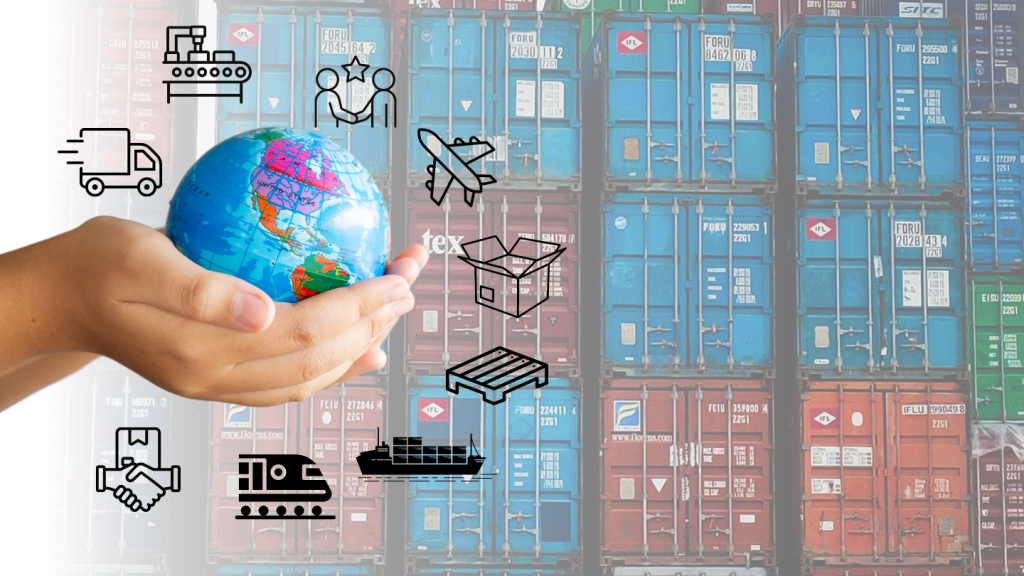
Managing Scopes 1, 2 and 3 is a crucial business strategy. In the era of heightened environmental consciousness, establishing a green supply chain isn’t just a noble move anymore. Balancing the triple bottom line requires Supply Chain professionals to define, measure, and innovate their environmental performance metrics. Enter Key Performance Indicators (KPIs): the yardsticks by which sustainability initiatives are quantified.
For sustainability managers, supply chain aficionados, and business leaders, this blog post decodes KPIs to infuse the green ethos into your supply chain strategy. By the end, you’ll be ready to weave sustainability into the very fabric of your supply chain operations.
Take a look at the other articles of the series: The Ultimate Guide to a Sustainable Supply Chain and Becoming a Sustainable Supply Chain.
Understanding Scope 1, 2 and 3 Emissions
Before we explore KPIs, we need to understand the framework wherein these metrics operate. The Greenhouse Gas Protocol, created by the World Resources Institute (WRI) and the World Business Council on Sustainable Development (WBCSD), provides a set of guidelines for understanding, quantifying, and managing greenhouse gas emissions. It classifies emissions into three ‘scopes’:
- Scope 1: Direct emissions from sources that are owned or controlled by the reporting entity, such as combustion of fuel in owned boilers or vehicles.
- Scope 2: Indirect emissions from electricity purchased and used by the reporting entity.
- Scope 3: All other indirect emissions that occur in a company’s value chain, from sources such as business travel, product transport, and waste disposal.
Each scope presents unique challenges and opportunities for environmental improvements, and appropriate KPIs are pivotal in driving accountability and performance.
Scope 1 Emissions KPIs
For those emissions directly attributed to a company’s own operations, the following KPIs stand out as key gauges:
- Fuel Combustion KPIs: These track the emissions from owned or controlled sources, often measured in CO2e (carbon dioxide equivalent) emissions per unit of fuel consumed.
- Process Emission KPIs: For processes that involve chemical reactions (other than fuel combustion), KPIs track CO2e emissions per product unit.
- Heating and Cooling Efficiency: This KPI measures the efficiency in heating and cooling and can significantly affect the CO2e emissions produced per unit of energy.
Ensuring these are regularly monitored and managed can have immediate, visible impacts on a company’s carbon footprint.
Scope 2 Emissions KPIs
Scope 2 focuses on the emissions from the electricity, heat, or steam that an organization purchases. Key KPIs for Scope 2 include:
- Carbon Intensity of Purchased Electricity: This KPI helps companies understand how much CO2e is emitted to produce the purchased energy, measured in CO2e per unit of electricity consumed.
- Renewable Energy Penetration: It’s measured via the percentage of energy sourced from renewable sources, directly reducing the carbon intensity of purchased electricity.
- Energy Cost as a Percentage of Operating Expenses: This KPI highlights the financial impacts of energy consumption and changes in energy sourcing strategies, nudging towards more sustainable operations.
By tracking and acting on these KPIs, companies can significantly reduce their carbon footprint and contribute to a greener grid.
Scope 3 Emissions KPIs
Scope 3 emissions, often the hardest to quantify, require a different approach, mostly through engagement with supply chain partners. KPIs include:
- Supply Chain Transparency: An essential KPI, companies measure this by the percentage of suppliers that provide Scope 3 emission data, demonstrating a commitment to tracking and improving these emissions.
- Freight Transport Efficiency: Companies measure the average CO2e emissions per tonne-kilometre of freight transported, helping optimise and green the logistics network.
- Product End-of-Life Management: An important KPI for companies producing goods with short lifespans, which measures how well they contribute to waste minimisation, be it through recycling initiatives or product designs.
These KPIs push companies to influence environmental responsibility across their value chain, driving innovation and collaboration.
Integrating Scope 1, 2 and 3 KPIs into Sustainability Strategies
Measuring emissions is only the tip of the iceberg; integrating KPIs into a holistic sustainability strategy is where real change happens. This involves:
- Goal Setting and Tracking: Establishing ambitious, yet achievable, sustainability targets aligned with KPIs and tracking the progress over time.
- Incentivising Emission Reductions: Creating internal programmes that reward teams and individuals for reducing emissions that align with your Scope 1, 2, and 3 KPIs.
- Communication and Reporting: Regularly sharing KPI successes and challenges with stakeholders internally and externally to reinforce the company’s commitment to sustainability.
By methodically integrating KPIs into your sustainability framework, your organisation will start to think and act greener, from the boardroom to the loading dock.
Conclusion
The road to a green supply chain is paved with data-driven strategies, and KPIs are the signposts guiding the way. Employing the right set of KPIs allows businesses to not only measure their environmental impact but to actively reduce it, creating a positive ripple effect throughout their operations and industry.
Organisations committed to a sustainable future must meticulously select, monitor, and act on KPIs that resonate with the values of environmental stewardship. The result is a competitive edge, improved brand reputation, and, most importantly, a lasting, positive impact on our planet.
Transitioning to a green supply chain is an ambitious, yet imperative, move. For those looking to take the first step or refine their existing sustainability KPIs, our team of industry experts is ready to assist. Connect with us to begin your sustainable supply chain journey today and set the KPIs that will lead your company towards a greener, brighter future.

📷 Canva







